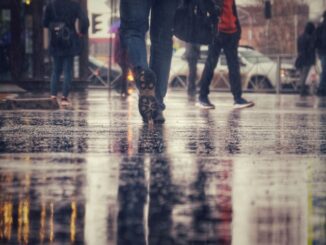
In Ontario, the legal responsibility of property owners to ensure the safety of those entering their premises falls under the umbrella of occupier’s liability. This complex legal area dictates the duty of care owed by an “occupier” – homeowners, businesses, or condominium corporations managing common areas – to anyone lawfully on the property. Slip and falls are a common concern, but occupier’s liability extends far beyond icy walkways. Examining leading cases, including the landmark MacKay v Starbucks decision, provides valuable insights into how courts determine liability in such situations.
The Occupier’s Liability Act (OLA): Setting the Stage
The Occupier’s Liability Act (OLA) serves as the foundation for occupier’s liability claims in Ontario. It outlines the standard of care an occupier must maintain to ensure the safety of anyone lawfully entering their premises. This includes invitees (customers in a store), licensees (social guests in a home), and trespassers (though the duty owed varies depending on the category).
The core concept is “reasonable care” in all the circumstances. However, what constitutes “reasonable care” depends on the specific situation and has been shaped by various court decisions.
Landmark Cases: Defining the Duty of Care
Several landmark cases have significantly impacted how courts approach occupier’s liability claims in Ontario. Here are a few key examples:
- Waldick v Malcolm (1991) [SCC]: This Supreme Court of Canada case established the foundation for modern occupier’s liability in Ontario. It clarified the duty of care under the OLA, emphasizing the need for a “reasonable” standard based on all the circumstances. The court introduced the concept of foreseeability – the occupier’s knowledge or ability to foresee the potential for harm.
- Delzilio v. Seguin (2009) [OCA]: The Ontario Court of Appeal delved deeper into foreseeability in Delzilio v. Seguin (2009) [OCA]. The court ruled that an occupier is not responsible for every possible accident but is liable for taking reasonable steps to address foreseeable risks.
- Triantafilou v. Klomp (2015) [SCC]: The Supreme Court of Canada revisited the standard of care for occupiers in Triantafilou v. Klomp (2015) [SCC]. This case emphasized the importance of context. The court reaffirmed that the reasonableness of the occupier’s actions should be assessed based on the specific circumstances of each case.
These cases, along with countless others, have helped refine the understanding of “reasonable care” in occupier’s liability claims.
MacKay v Starbucks: Expanding the Occupier’s Domain
The 2017 case of MacKay v Starbucks Corporation (2017) [OCA] is a landmark decision that significantly expanded the scope of an occupier’s responsibility. Carole MacKay slipped and fell on an ice-covered section of the municipal sidewalk leading to a Starbucks patio entrance. The court unanimously held Starbucks liable as an occupier of the sidewalk, even though it wasn’t technically their property.
This decision hinged on the concept of “control.” The court found that Starbucks exercised control over the sidewalk by using it for their commercial purposes (patio seating) and by clearing snow from it on some occasions. This established a precedent where occupiers can be held responsible for maintaining safe access points, even if they are not the legal owners of the property.
MacKay’s Legacy: Ripple Effects on Other Cases
The MacKay v Starbucks decision has had a ripple effect on subsequent occupier’s liability cases. Here are some examples:
- Adler v. Kenedy (2018) [ONSC]: This case involved a slip and fall on a snow-covered ramp leading to a doctor’s office. Citing MacKay, the court found that the doctor’s office could be liable for failing to take reasonable steps to ensure the safety of the ramp, even though it was part of a municipal sidewalk.
- Singh v. Tim Hortons (2019) [ONSC]: Here, the court found a Tim Hortons franchise liable for a slip and fall on an icy sidewalk outside the store due to their control over snow removal practices in that area.



